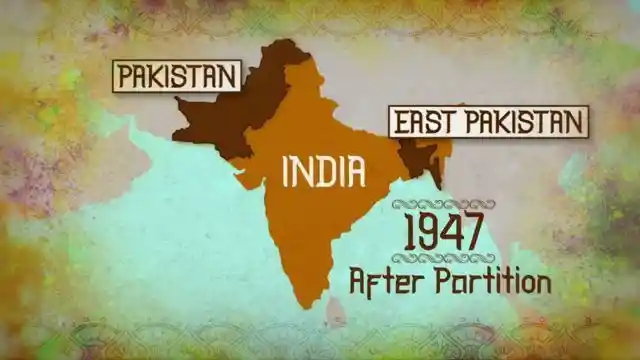The Economic Impact of an Uneconomic Division
The oddity of the whole event lies in the fact that the two nations, that once existed peacefully as a single unit decided to call it quits without considering the economic factors, and proceeded with a division based on intolerance.

The Aftermath. Image source: BBC
If one looked at India and Pakistan today, they'd rarely believe that before 1947, these two regions were one. The animosity that now lingers in the atmosphere of the two nations was unheard of in the past.
This saga of an undying disdain for each other began right after the partition of 1947. We all know that countless people were displaced as a result of the event. Both countries suffered an inexplicable loss culturally and economically.
The British found it difficult to govern the subcontinent after World War II, and they decided to leave. Since the partition was inevitable, provisions were made for the cooperation in defence, currency and public finance, communication and claims. Since the military corps comprised people from all backgrounds, the British insisted that the army remain undivided and provide security to both nations during this transitionary phase.
When it came to the question of finance, it was decided that Pakistan would receive 17.5 per cent of the assets and liabilities of British India. The Central Banking system of India also served Pakistan till the currency and financial systems of the newly formed nation were established. Any disputes that arose were settled through negotiations and arbitral procedures.
Gradually, both countries witnessed the division of railways, government furniture, telegraph facilities, and communications systems. A noteworthy instance was both countries' decision to divide irrigation facilities through a non-economic principle.
Unfortunately, when the partition broke out, all hell broke loose. Families that once dined together were now willing to slash each other's throats. Hatred and bitterness are contagious, and both nations were plagued by it.
Once the spirit of the division was dead, a new crisis awaited all. The initial worry of curbing rioters was now replaced with the transfer of 70 per cent of Pakistan's rupee assets from India to Pakistan. Another contentious topic was the irrigation system. Water is crucial to agricultural activity, and India had the upper hand here. Once East Punjab cut off the water supply, a series of talks were held that ultimately culminated in the Indus Water Treaty.
India was facing a shortage of foodgrains, and Pakistan needed water for irrigation. It's not surprising that the two countries reached a conclusive decision benefitting both.
Pakistan was met with another blow when it realized that it lacked in minerals and resources necessary to support heavy industry. India, on the other hand, was abundant in ores and even oil.
Despite many factors, the biggest one was agriculture. With both countries lacking in some regard, devaluation became inevitable, and smuggling of foodgrains from Pakistan to India became rampant.
The economic relations underwent deterioration when the Indian currency was devalued.
Contrary to what the world expected, Indian industries, trade, and financial skills were negligibly affected.
In the end, both countries suffered due to a lack of balance in agriculture and industry. But this was expected because when two regions have lived as a singular economic unit for centuries, sudden division due to the uneconomic reason of 'mutual antipathies' shatters most milestones they'd covered.


